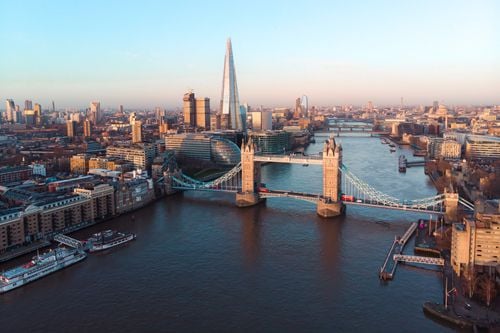The history of the Suleymaniye Mosque in Istanbul dates back to 1550, when Suleyman I decided to build the largest and most beautiful Islamic temple in the empire. The famous Ottoman architect Mimar Sinan, who was famous for constructing buildings without an architectural plan, realised the padishah's dream. When building the sanctuary, the engineer used a technology that was innovative at the time, fixing the bricks with iron supports and then pouring molten lead for strength.
The very mention of the Suleymaniye Mosque takes us back to the ancient history of Istanbul. A symbol of the Ottoman era and a religious treasure, the mosque is the largest Islamic temple in Istanbul. Geographically, the building is located in the old quarter of the city on a hill bordered by the Golden Horn. Suleymaniye's walls are capable of holding up to 5,000 parishioners, making it one of the most visited mosques not only among local residents, but also among Muslim pilgrims from other states.
In addition to the main building, the religious complex includes many other buildings: a Turkish hammam, a dining hall for the homeless, an observatory, a madrasah (Koranic school), a library and much more. Covering an area of over 4,500 square metres, the temple is also very popular with tourists for its authenticity and magnificent decoration, as well as the tombs of Sultan Suleiman I the Magnificent and his famous wife Roksolana.
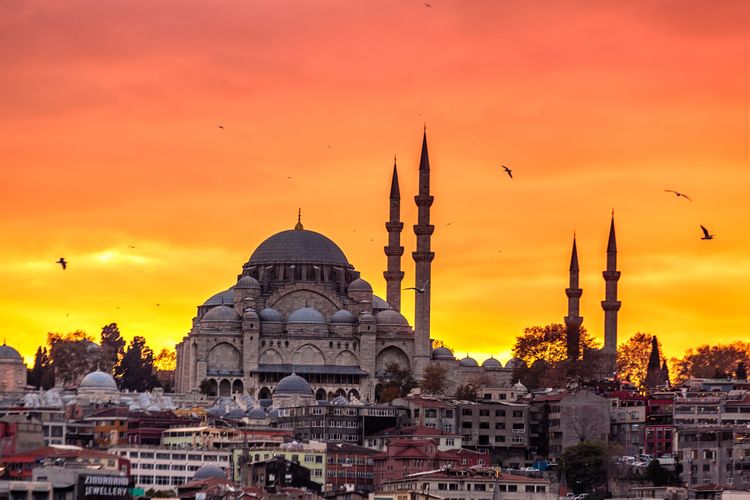
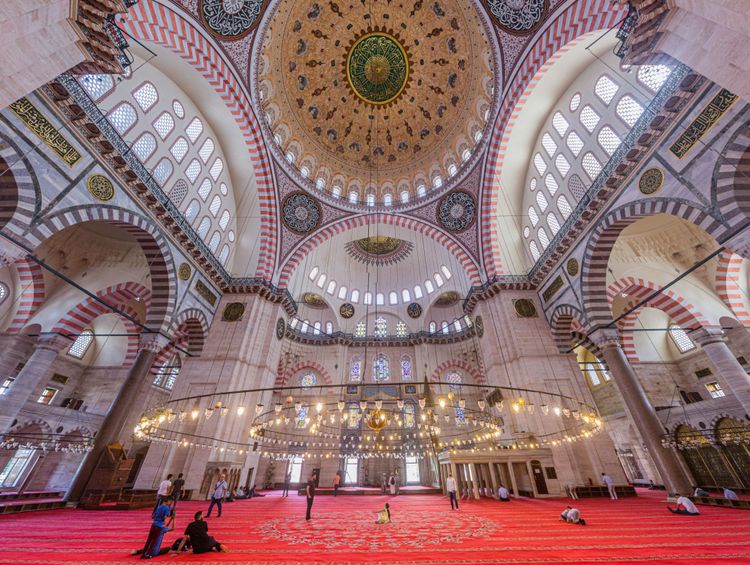
In total, the construction took around 7 years, and the architect predicted the eternal existence of this sturdy building. And after several centuries, his words have not been called into question.
What can you see inside the complex?
This religious complex is majestic and solemn. The main dome is 53 metres high, with a diameter of almost 28 metres. The mosque is decorated with 4 minarets, two of which stretch to a height of 56 metres, the other two - 76 metres.
Lazzoni Hotel
Hotel ideally located near Istanbul's old townIn the eastern part of Suleymaniye, there is a large courtyard containing seven tombs, including those of the sultan and his wife Roksolana (Alexandra Anastasia Lisowska). The padishah's tomb is an octagonal structure with a domed roof, decorated with marble columns and Islamic ornamentation.

Next to the sultan's mausoleum is the tomb of Roksolana, followed by other sarcophagi including those of his son Mehmed and the niece of Bishop Sultan Hanim.
The walls of the tomb are lined with Izmir blue tiles, on which poems are displayed. It is worth noting that the dome of Roksolana's tomb is painted white and that there are no inscriptions on it. Perhaps the architect wanted to emphasise the purity of Alexandra Anastasia Lisowska's heart and soul.
The internal structure of the mosque has 168 windows, 32 of which are located at the top of the dome. As a result, the rays of light flow in a thick stream from the top of the dome to the ground, creating a magical, angelic atmosphere.
The architect's talent is also evident in the decoration of the mosque, which features marble tiles and stained glass windows. The hall of the mosque is decorated with floral motifs and geometric shapes, many of which are accompanied by sacred texts from the Koran. The building's floors are covered mainly with red and blue carpets.
The Suleymaniye's front courtyard, on the west side of the complex, is decorated with marble columns and a square marble fountain.
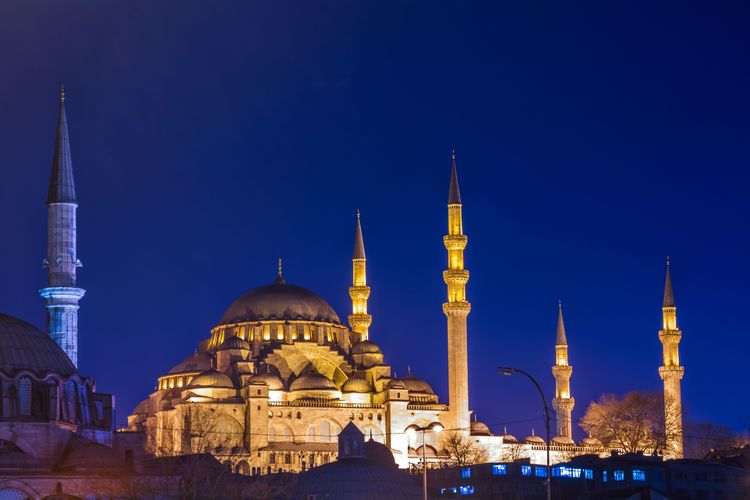
Stories and legends
A building as exceptional as Suleymaniye is bound to keep secrets... And with good reason, legends have flourished since its creation.
One legend has it that before the mosque was built, the prophet Mohammed appeared in the sultan's dream. He is said to have indicated where the future sanctuary was to be built. After waking up, the sultan immediately called the architect Sinan.
Another legend is associated with the incredible acoustics of the Sulaymaniye Mosque. To achieve the desired effect, the architect ordered jugs to be inserted into the walls of the mosque, giving it a very special resonance.
"A very nice surprise, this mosque surrounded by greenery, which is not the case everywhere. It's well worth the diversions. Breathtaking view of the Bosphorus"
If you look more closely in the room named Suleymaniye, you can see large ostrich eggs hanging between the lamps. It turns out that the eggs are not used as a decorative element, but as a method of combating insects, particularly spiders.
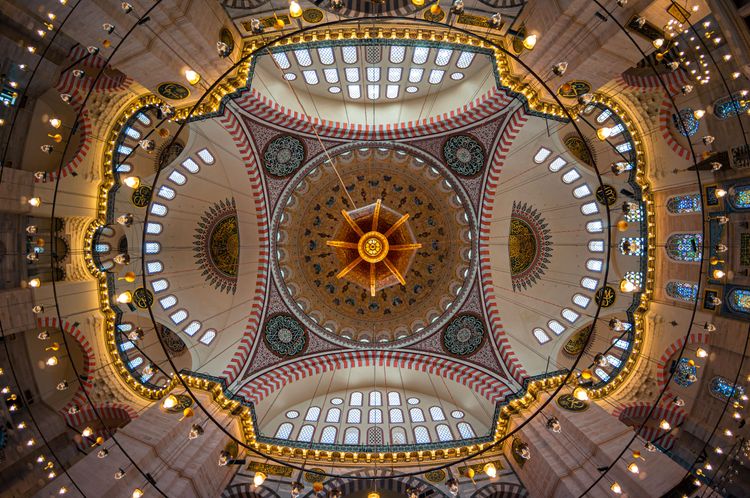
Practical info
How to get there Suleymaniye is located 20km east of Atatürk International Airport and 3km north-west of Istanbul's most visited square, Sultanahmed Square. The easiest way to get there is by taxi or by taking the T1 Kabatas-Bagcilar tram and stopping at Laleli-Universite. There is then a short distance to walk to reach the attraction.
Suleymaniye Mosque opening times: tourists can visit the tombs of Suleyman I and Roksolana every day between prayers.
Entrance fees: Entry is free.
A few rules: You must respect a strict dress code. Women must cover their heads, arms and legs, and trousers (jeans, for example) are also taboo. Choose loose-fitting clothing. Men are not allowed to enter the sanctuary in shorts and a T-shirt. All visitors must remove their shoes before entering the mosque.
Within the walls of Suleymaniye, it is necessary to respect order and silence, and not to laugh or speak loudly. It is forbidden to take photographs with cameras or telephones.



